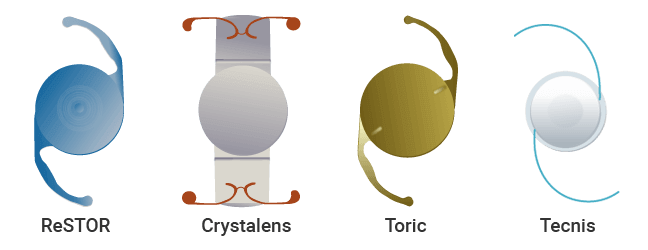What is a Cataract?

A cataract is a clouding on your eye’s natural lens. Degenerative changes in your eye’s structure cause lens proteins to precipitate and clump within the lens of your eye, producing opacities, and clouding vision.
Typically, the degenerative eye changes are a natural occurrence during your aging process. Your cataract will cause blurred vision because the crystalline lens of your eye needs to remain clear to properly focus images on your retina. However, eye injuries, diseases, and some medications can also contribute to the formation of cataracts.
Our eye doctors have treated cataracts in San Antonio for many years. Our experience and use of state-of-the-art-technology make us a clear choice for cataract surgery. Worried about cataract surgery cost? Ask about our many options for financing your procedure.
Cataract surgery is the most commonly performed procedure in the United States. You should choose an eye surgeon carefully – taking into account such factors as the doctor’s training, past success, and confidence he or she instills in you – no one should hesitate to have this procedure. Life is too good to miss because of clouded vision!
Learn more about our specialties in cataract treatment in Texas MD’s featured article of Dr. Lisa Martén Clarity and Cataracts.
What are Possible Symptoms of a Cataract?
- Blurred, cloudy, or distorted vision
- Double vision
- Inability to see bright colors at their full intensity
- Progressive loss of vision/frequent need to update vision correction prescription
- Poor night vision
- Increased sensitivity to glare
- Appearance of halos around lights
- Visible white spot on pupil
The above symptoms are not exclusive to cataracts. If you are experiencing any of the above signs, with our doctors today.
Call us at (210) 692-1388 or schedule a vision assessment with one of our skill cataract specialists to explore vision correction options, and the potential early detection of other serious health problems.
How Fast Can Cataracts Develop?
Cataracts develop in stages but do not necessarily progress at the same rate. As the cataract increases in size, its symptoms also tend to worsen.
Some cataracts may quickly develop over a few months, while others may take years to mature. In some cases, cataracts never grow out of the early stages and present little or no vision problems.
Cataracts in later stages, however, can make day-to-day living difficult. Although you may eventually develop cataracts in both eyes, having a cataract in one eye does not lead to getting a cataract in the other eye.
Laser Cataract Surgery
We now offer laser-assisted cataract surgery to improve precision and safety during your procedure. Watch this video to learn more about how using a laser instead of blades can help you improve your vision:
Selecting Your Lens Implant Type
Once you have made the decision with your doctor to undergo cataract surgery, you will have a series of choices to make. These relate to the type of lens implant that will best fit your lifestyle.
Monofocal lenses allow clear vision at one distance only if do not have astigmatism. You may need glasses either to correct astigmatism or to correct for vision at different distances.

You and your eye doctor will work together to determine the right lens for your eyes. If an advanced/premium lens implant is suitable, and the chances of success are good, you can explore this path.
Advanced lenses typically come with an extra cost that Medicare and most insurances do not cover. Advanced lenses allow a wider range of vision from reading to distance without always having to put on glasses.
With advanced lenses, you can enjoy eyeglasses-free vision for about 80-90% of the time.
No lens is as perfect as your natural lens, and they all have pros and cons. We will be able to guide you in choosing your best lens.
- Multifocal
- Accommodating
- Toric
- Combination
Multifocal Lens Implants are advanced lenses with multiple focal points, designed to replace cataracts and correct presbyopia. These lenses split light to provide clearer vision at different distances. Multifocal IOLs provide an improved range of vision for near, intermediate, and distance vision.
IOL: Multifocal Lens – Overview
Accommodating Lens Implants are advanced/premium lenses that contain hinges that allow for flexibility of the lens. The hinge helps mimic the natural lens by moving inside the eye to accommodate.
These lenses can provide improved near, intermediate, and far vision. The Crystalens and the Trulign™ -Toric Accommodating Intraocular Lenses (Bausch & Lomb) currently are the only FDA approved intraocular lenses (IOL) that use a method called accommodation.
IOL: Accommodative Lens – Overview
Toric Lens Implants are lenses that can correct astigmatism. This lens has a single focal point designed to correct preexisting astigmatism.
Mild to moderate astigmatism can be corrected to improve distance vision without dependence on glasses. Glasses will be required for near vision activities such as reading.
Combination Multifocal / Toric Implants– are available as an option for patients who have mild to moderate astigmatism but also want to improve the range of vision up close.
Combination Accommodative / Toric Implants- Trulign™ can correct for low to moderate astigmatism and has the same accommodation properties as the Crystalens.

